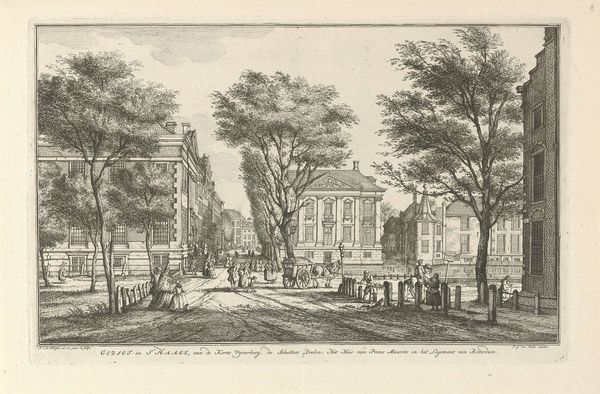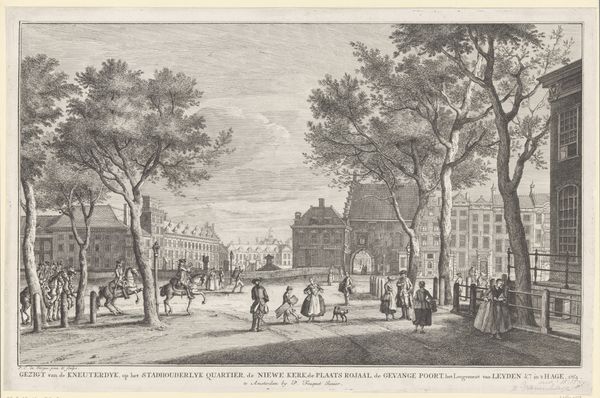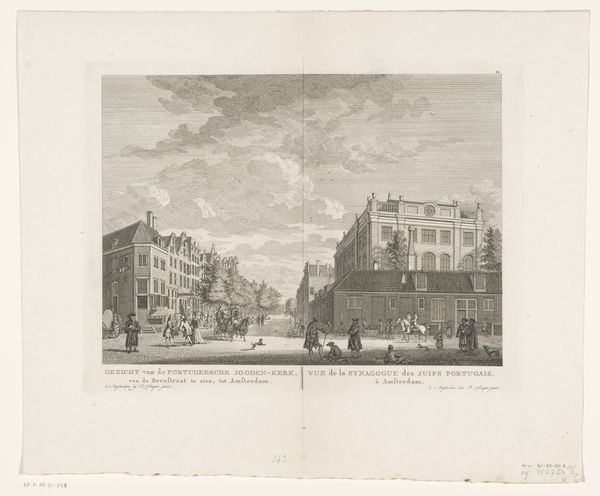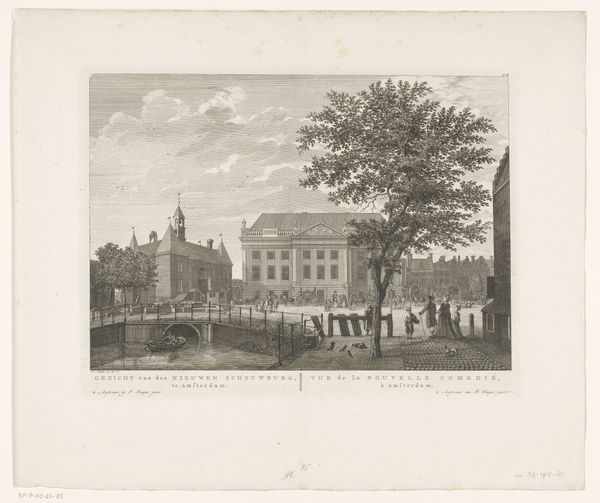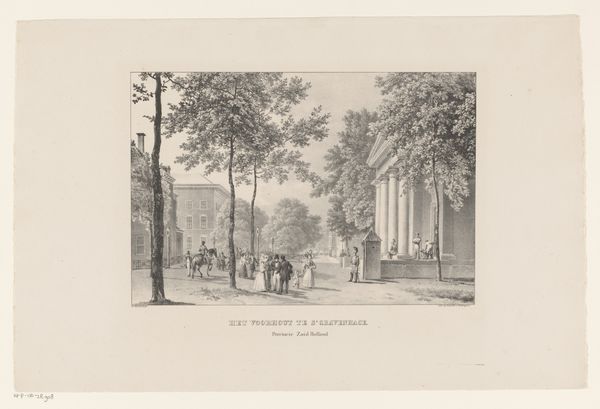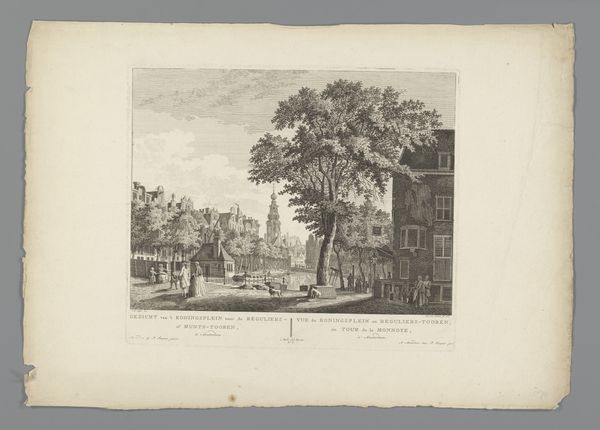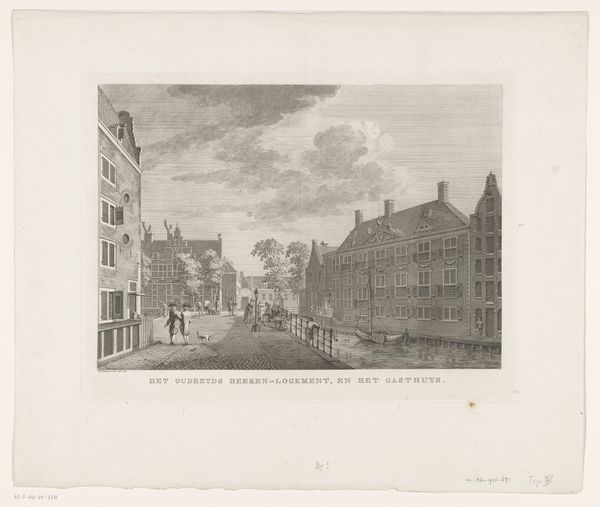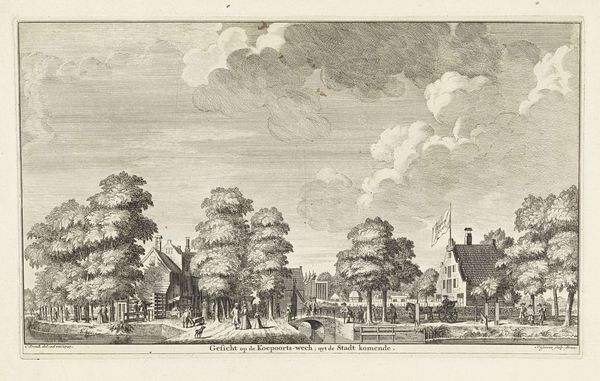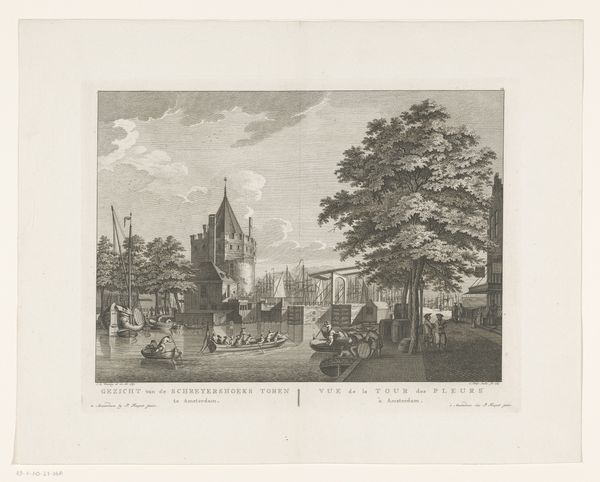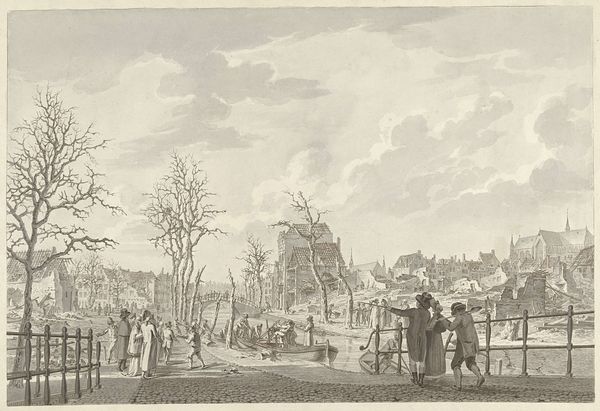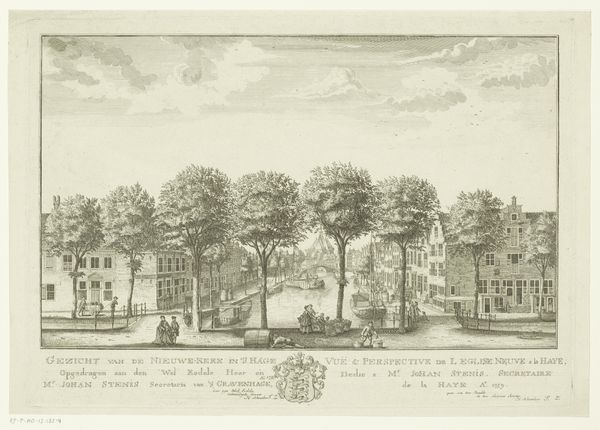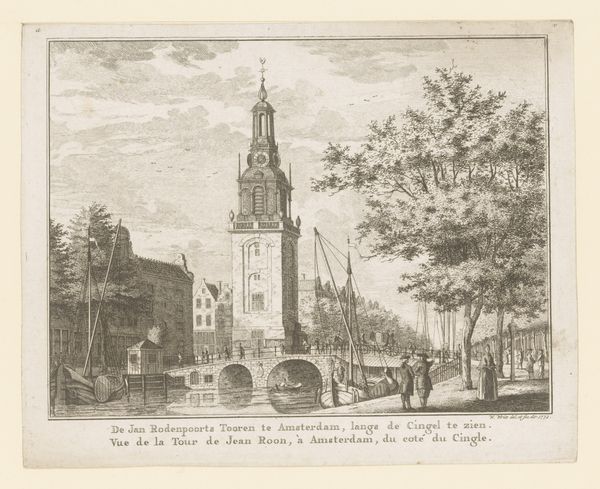
Dimensions: height 290 mm, width 357 mm
Copyright: Rijks Museum: Open Domain
This print of the Nieuwe Lutherse Kerk in Amsterdam, before the fire of 1822, was created by A. Lutz using etching. This image shows an architectural structure situated next to a canal, with figures walking along a street and boats moored along the waterway. Etching is an indirect, labor-intensive process. The metal plate would have been coated with a waxy, acid-resistant ground. The artist then scratches through this ground with a needle to expose the metal. Immersed in acid, the exposed lines are bitten, creating grooves. The deeper and longer the bite, the darker the line will appear in the print. Ink is then forced into these lines, the surface is wiped clean, and the image is transferred to paper under high pressure. The level of detail achieved in the print speaks to the etcher's skill. Lutz captured the likeness of the church, and gave a snapshot of life around Amsterdam’s waterways. The finished work offers a glimpse into 19th-century Amsterdam, revealing social dynamics and cultural values. It’s a compelling reminder that images, like all forms of making, are shaped by the materials and processes used to create them.
Comments
No comments
Be the first to comment and join the conversation on the ultimate creative platform.
